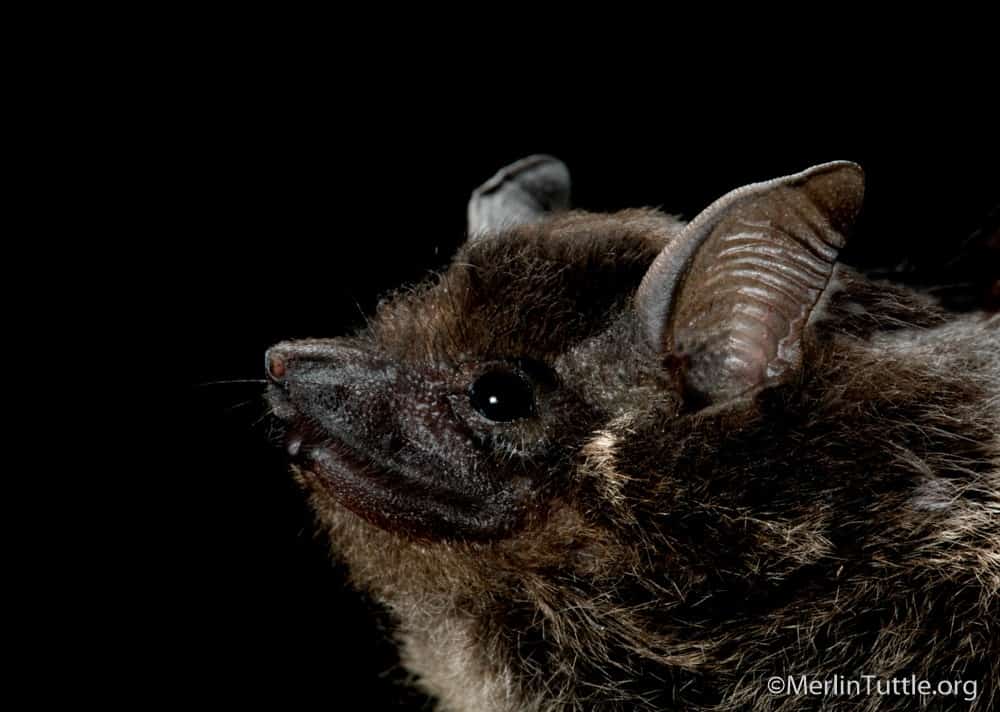Bat Flash: Countering Misinformation and Championing Evidence-Based Science
On March 6, 2024, the Wall Street Journal presented findings from the University of Leeds in their opinion piece, “Why Scientists Love Chasing Bats; The
The avalanche of speculative reports associating bats with COVID-19 seems never ending. However, at a time of scary misinformation, bat researchers and conservationists worldwide are discovering new reasons to appreciate bats, some decades in the making.
In Central America, researchers from the Free University of Berlin analyzed communication between bat mothers and their pups. Just like humans talking to a baby, adult greater sac-winged bats (Saccopteryx bilineata) alter the “color” and pitch of their pup-directed vocalizations. Not surprising, this breakthrough indicates parent-offspring communication in bats is more complex than previously assumed. Further investigation of social feedback during vocal development in young bats may reveal even more shared language features between bats and humans.

Across the Atlantic, a team of scientists in Africa used novel methods to describe more accurately the differences among bats. It turns out—as is common when studying bats—there is more than meets the eye. Comparison of the penis bones, echolocation calls, and genes of African vesper bats revealed three new species and two new genera. The discovery could mean new identification techniques for the often-indistinguishable group and clearer protections for unique bats and their ecosystems.
Despite great scientific advances, improved communication is needed to successfully interpret and share bat values with others. Douglas MacFarlane and Ricardo Rocha have taken this into account. By applying conversation psychology, they provide communication guidelines that can help neutralize negative associations between bats and disease. Even scientists with good intentions may inadvertently undermine their message by failing to debunk misinformation.
Falsehoods and fear are easily created through misunderstandings. For example, in Iran and the Mediterranean, myths of mercury-containing “bat nests” began circulating over social media, inciting needless environmental destruction. In response, Iranian researcher, Dr. Hossein Zohoori, teamed up to create Mercury Mirage, a powerful documentary that discredited the untruths with stunning visual evidence.
We congratulate all who are persevering in unveiling the real world of bats in times when investigation, attention and resources have been so severely misdirected toward disease speculation. Discoveries of bat sophistication and values, and effective communication, have never been more important.
TAKE ACTION!
We invite you to choose any or all means of sharing your THANKS and ENCOURAGEMENT for this positive press. We’re always especially excited to share praise-worthy Bat Flashes.
Our combined voices can make a difference. We invite you to briefly share your praise in your own words with producers and editors. They do take notice. Remember, your response can be very simple. Just let them know you like or dislike an article. It’s numbers that count and bats need all of you! Tell a friend about bat values and how they can help. Thank you for your vigilant support of bats, their conservation, and MTBC.
Show your support in the comments at the bottom of each article and/or share on Facebook and Twitter!
Love our content? Support us by sharing it!
On March 6, 2024, the Wall Street Journal presented findings from the University of Leeds in their opinion piece, “Why Scientists Love Chasing Bats; The
Response to Misleading Scientific American Bat Story I am responding to the article titled, “A Secret Weapon in Preventing the Next Pandemic: Fruit Bats,” which
Believe it or not, bats have one of our planet’s finest records of living safely with humans. Despite frequent claims to the contrary, they harbor
The series Curious Kids, hosted by The Conversation, is designed to provide expert answers to questions asked by children from around the world. The December
2024 © Merlin Tuttle’s Bat Conservation. All rights reserved.
Madelline Mathis has a degree in environmental studies from Rollins College and a passion for wildlife conservation. She is an outstanding nature photographer who has worked extensively with Merlin and other MTBC staff studying and photographing bats in Mozambique, Cuba, Costa Rica, and Texas. Following college graduation, she was employed as an environmental specialist for the Florida Department of Environmental Protection. She subsequently founded the Florida chapter of the International DarkSky Association and currently serves on the board of DarkSky Texas. She also serves on the board of Houston Wilderness and was appointed to the Austin Water Resource Community Planning Task Force.
Michael Lazari Karapetian has over twenty years of investment management experience. He has a degree in business management, is a certified NBA agent, and gained early experience as a money manager for the Bank of America where he established model portfolios for high-net-worth clients. In 2003 he founded Lazari Capital Management, Inc. and Lazari Asset Management, Inc. He is President and CIO of both and manages over a half a billion in assets. In his personal time he champions philanthropic causes. He serves on the board of Moravian College and has a strong affinity for wildlife, both funding and volunteering on behalf of endangered species.